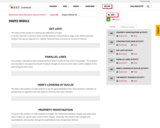
- Subject:
- Elementary Education
- Mathematics
- Material Type:
- Module
- Author:
- OER Librarian
- Date Added:
- 05/07/2021

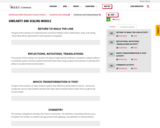
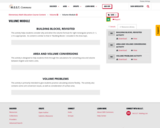

Learning Objectives: 1).Determine point estimates in simple cases, and make the connection between the sampling distribution of a statistic, and its properties as a point estimator.
2). Explain what a confidence interval represents and determine how changes in sample size and confidence level affect the precision of the confidence interval.
3). Find confidence intervals for the population mean and the population proportion (when certain conditions are met), and perform sample size calculations.

1). Summarize and describe the distribution of a categorical variable in context.
2). Generate and interpret several different graphical displays of the distribution of a quantitative variable (histogram, stemplot, boxplot).
3). Summarize and describe the distribution of a quantitative variable in context: a) describe the overall pattern, b) describe striking deviations from the pattern.
4). Relate measures of center and spread to the shape of the distribution, and choose the appropriate measures in different contexts.
5). Compare and contrast distributions (of quantitative data) from two or more groups, and produce a brief summary, interpreting your findings in context.
5). Apply the standard deviation rule to the special case of distributions having the "normal" shape.
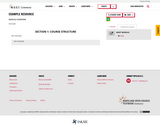
Example
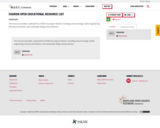
This resource provides a selected list of OERs focusing on fashion, including costume design, textile engineering, diversity and fashion, and sustainable design and production.
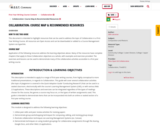
How to Use This GuideThis document is intended to highlight resources that can be used to address the topic of Collaboration in a First-Year Writing Course. All resources are Open Access and can be downloaded or added to a Course Management System via hyperlink.Course MapApplication of the following resources address the learning objectives above. Many of the resources have complete chapters that apply to these Collaboration objectives as a whole, with examples and exercises provided. The exercises and lessons can be used to demonstrate many of the collaborative activities accessible in a first-year writing course.
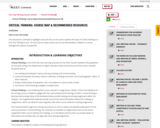
How to Use This GuideThis document is intended to highlight resources that can be used to address the topic of Critical Thinking in a First-Year Writing Course. All resources are Open Access and can be downloaded or added to a Course Management System via hyperlink.
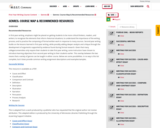
Recommended ResourcesIn first-year writing, emphasis might be placed on getting students to be more critical thinkers, readers, and writers; to recognize the elements that inform rhetorical situations; to understand the importance of the writing process; and to practice the composing of formal written work in response to many sources. Second-year writing builds on the lessons learned in first-year writing, while possibly adding deeper analysis and critique through the development of arguments supported by evidence found during formal research. Given that many colleges/universities only require their students to take first-year writing, some instructors have chosen to introduce learning objectives from second-year writing to their students earlier. This overlap between the two means that a variety of genres can be taught in either course. Below are some possibilities. In no way is this list complete, but it does provide common writing assignment descriptions and examples/samples.Successful WritingThis resource is available as a PDF.Cause and EffectClassificationComparison and ContrastDefinitionDescriptionIllustrationNarrationPersuasionProcess AnalysisResearchWriting for SuccessThis is adapted from a work produced by a publisher who has requested that the original author not receive attribution. This adapted edition is produced by the University of Minnesota Libraries Publishing through the eLearning Support Initiative.Cause-and-Effect EssayClassification EssayCompare-and-Contrast EssayDefinition EssayDescriptive EssayIllustration EssayNarrative EssayPersuasive EssayProcess Analysis EssayWriting Unleashed by Sybil Priebe, Dana Anderson, and Ronda MarmanThis resource is available as a PDF and published by North Dakota State College of Science. ArgumentCause and EffectCompare and ContrastDefinitionDescriptionDivision and ClassificationEmailEssaysIllustrationLettersMemoirsNarrationProfilesProcess AnalysisResearchPurdue Online Writing LabMost students are familiar with this site due to its extensive use among English instructors.Annotated BibliographiesArgumentBook ReportsBook ReviewsDefinitionsExam EssaysExploratoryCover LettersResearch RésumésThe Process of Research Writing by Steven KrauseThis resource has Creative Commons Attribution, Noncommercial-Share Alike 3.0.Annotated Bibliography
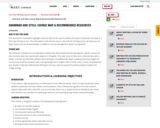
How to Use This GuideThis document is intended to highlight resources that can be used to address the topics of Grammar and Style in a First-Year Writing Course. This information could also be used in a Second-Year Writing Course. All resources are Open Access and can be downloaded or added to a Course Management System via hyperlink.Course Map The resources included here are intended to address the aforementioned learning objective. Specific sections of each resource have been paired with subjects in this guide. That said, many of these texts could also be used in whole. A shorter text like Robin Jeffrey’s About Writing or a handbook like Saylor Academy’s Business English for Success may be all that students with a strong background in English need. In other cases, a more comprehensive text, like the University of Minnesota’s Writing for Success, may be required to properly prepare students for college writing.
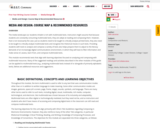
The media landscape our students inhabit is rich with multimodal texts. Instructors might assume that because students are constantly consuming multimodal texts, they are adept at reading and composing them. However, that is not necessarily the case. Just as students need to be taught to critically analyze printed texts, they also need to be taught to critically analyze multimodal texts and recognize the rhetorical moves in such texts. Providing students with tools to analyze and compose a variety of texts also helps prepare them to adjust to the literacy demands of an increasingly digital communications environment, in which they will have to filter information and make sense of, assess, learn from, and compose multimodal texts.This module recommends texts that align with learning objectives focused on analyzing and composing with multimodal resources. Many of the suggested readings and activities described in the other modules of this guide can be applied to multimodal texts (e.g., analyzing multimodal texts instead of or alongside of primarily alphabetic texts). Below are additional resources and suggestions.
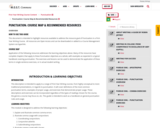
How to Use This GuideThis document is intended to highlight resources available to address the resource goal of Punctuation in a First-Year Writing Course. All resources are Open Access and can be downloaded or added to a Course Management System via hyperlink.Course MapApplication of the following resources addresses the learning objectives above. Many of the resources have complete chapters that apply to these Punctuation objectives as a whole, with examples as expected in a typical handbook covering punctuation. The exercises and lessons can be used to demonstrate the application of these terms in single-sentence exercises, or in actual student writing.
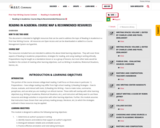
How to Use This GuideThis document is intended to highlight resources that can be used to address the topic of Reading in Academia in a First-Year Writing Course. All resources are Open Access and can be downloaded or added to a Course Management System via hyperlink.Course MapThe resources included here are intended to address the above listed learning objectives. They will cover three aspects of Reading in Academia: preparedness, strategies for reading, and using reading in writing ethically. Preparedness may be taught as a standalone lesson or as a group of lessons, but most other tasks would be handled in the context of meeting other learning objectives, such as Writing in Academia, Rhetorical Situations, Genres, etc.
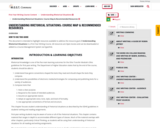
How to Use This GuideThis document is intended to highlight resources available to address the resource goal of Understanding Rhetorical Situations in a First-Year Writing Course. All resources are Open Access and can be downloaded or added to a Course Management System via hyperlink.
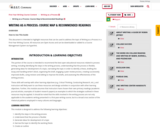
How to Use This GuideThis document is intended to highlight resources that can be used to address the topic of Writing as a Process in a First-Year Writing Course. All resources are Open Access and can be downloaded or added to a Course Management System via hyperlink.

How to Use This GuideThis document is intended to highlight resources that can be used to address the topic of Writing in Academia in a First-Year Writing Course. All resources are Open Access and can be downloaded to a Course Management System via hyperlink.IntroductionOften students enroll in a college-writing course with the common misconception that they will be doing more of what they did in high school English. This portion of the course is simply to introduce students to college writing, specifically how it differs from that of high school, the myths and expectations of writing for higher education, as well as types of assignments instructors may ask students to do. This module does not include many activities, for its intent is not to hone the writing skills of students. This introductory guide is intended to help students transition into new ways of approaching writing, and can be utilized regardless of the types of writing assignments chosen for the course.
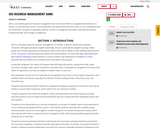
GEO is a simulation game for business management that can be used either as a supplemental exercise to a lecture- or case-intensive course, a core component of an experiential-intensive course, or as a competitive event for assessment. The game is especially suited for courses in management principles, international business, entrepreneurship, and strategic management.
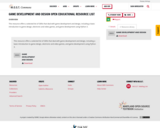
This resource offers a selected list of OERs that deal with game development and design, including a basic introduction to game design, electronic and video games, and game development using Python 3.
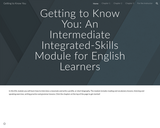
In this ESL module, students learn how to interview a classmate and write a profile, or short biography. The module includes reading and vocabulary lessons, listening and speaking exercises, writing practice and grammar lessons.